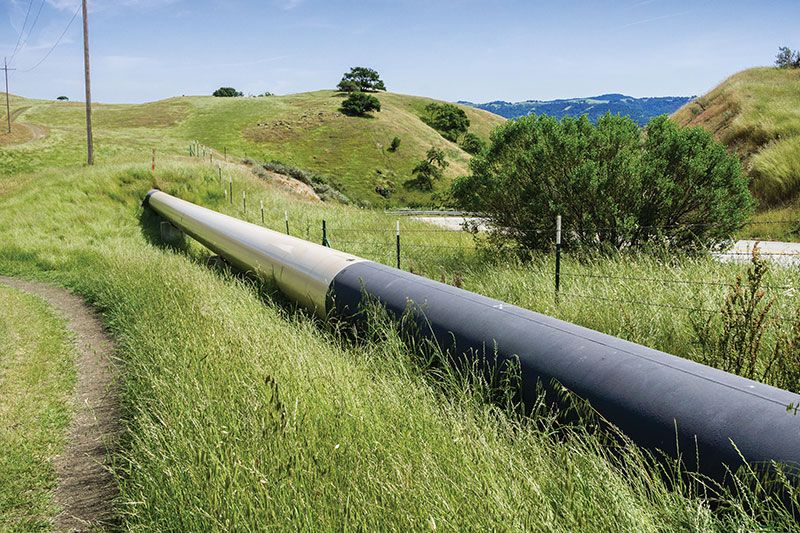November 2023, Vol. 250, No. 11
Government
Proposed PHMSA Leak Detection Changes Run into Opposition
(P&GJ) — While the CEQ’s proposed NEPA changes would affect how all federal agencies review potential GHG emissions for various industry energy construction projects, the Pipeline and Hazardous Materials Safety Administration (PHMSA) wants to restrict methane emissions for already-installed pipelines, as well as new ones.
The PHMSA issued a proposed rule in July, implementing a couple of key sections in the Protecting Our Infrastructure of Pipelines and Enhancing Safety Act of 2020.
There were a whole host of provisions in that proposed rule, including strengthened performance standards for advanced leak detection programs, leak grading and repair criteria with mandatory repair timelines and requirements for mitigation of emissions from blowdowns.
PHMSA would give the industry six months to comply with the new control requirements. The Interstate Natural Gas Association of America (INGAA) says the industry would need three years to assess numerous considerations prior to purchase or rental of temporary compression units, such as mechanical capability, infrastructure siting, air compressor or compressor power and much more.
INGAA estimates that the costs for gas transmission operators to comply with these new proposals will range between $228 to $516 million annually. It maintains these cost totals are a stark contrast to PHMSA’s assumption of $14.9 million per year.
It probably comes as no great surprise that pipeline groups are now complaining the proposal went way too far in numerous places, while environmentalists are arguing it did not go far enough in a couple of places.
A key area of disagreement is how far PHMSA should be able to go beyond addressing public safety concerns — which is the agency’s traditional mandate — and into trying to also address environmental concerns.
The 2020 law gives the PHMSA a bit of leeway here. Where the PHMSA deploys this latitude is the part of the proposal that sets out how a pipeline operator should handle blowdowns or venting for scheduled repairs, construction, maintenance and operations tasks. Use of flaring is one option which the PHMSA — with the support of environmental groups — is trying to limit, as opposed to venting.
The Environmental Defense Fund, for example, says that while flaring is clearly preferable to venting gas, it should only be used as a last resort to reduce emissions, after other options to reduce gas releases during blowdowns and similar processes have all been fully utilized.
It argues PHMSA should strengthen its proposal to clearly require that operators use as many of the non-flaring methods as are applicable in each situation — to reduce the volume of gas released during each event to the greatest extent possible — and then utilize flaring to reduce emissions from the residual gas release.
PHMSA proposes six methods pipelines may use to reduce the release of gas to the environment. Those methods include: (1) isolating the smallest section of the pipeline needed to complete the task; (2) routing gas from the nearest isolation valve or control fitting to a flare, as fuel gas; (3) reduce the pressure by using in-line compression; (4) reduce the pressure by using mobile compression; (5) transfer the gas to a segment of a lower pressure pipeline system adjacent to the nearest isolation valve; or (6) employ an alternative method, which will result in a release volume reduction of at least 50%, compared to venting gas directly to the atmosphere.
INGAA responded that restricting flaring increases methane emissions. Flaring can reduce the effect of emissions on climate change by up to 25 times. If operators were to flare instead of venting — with 95% flare efficiency — the industry would reduce the Global Warming Potential of the emissions by almost 91%.






Comments